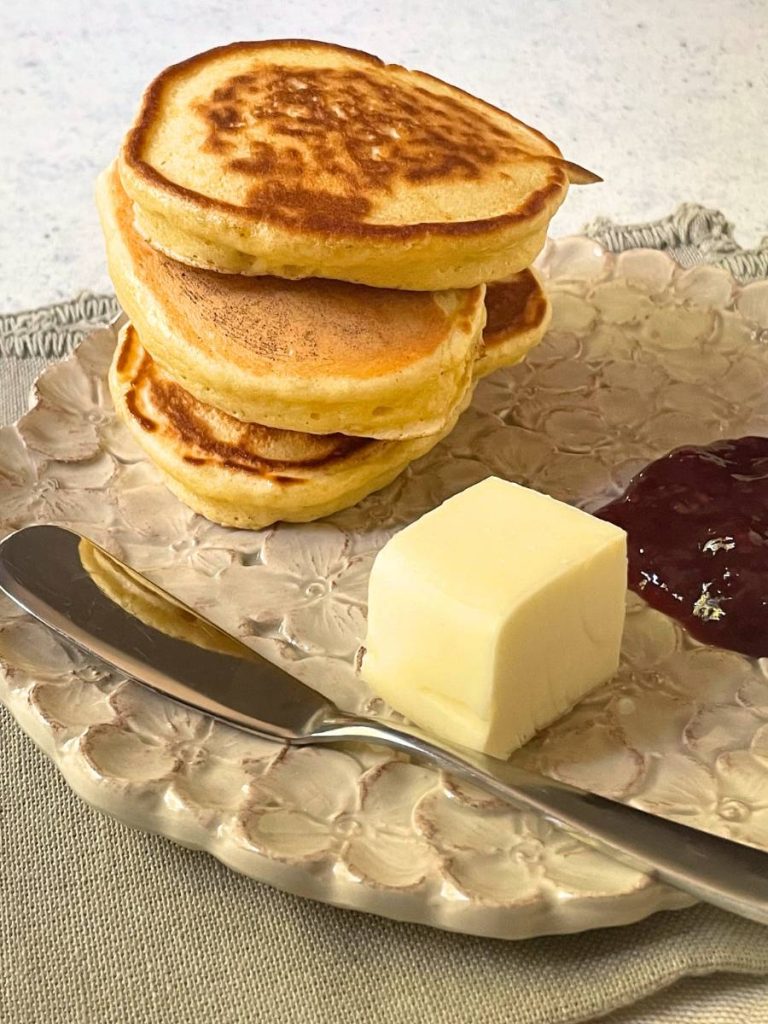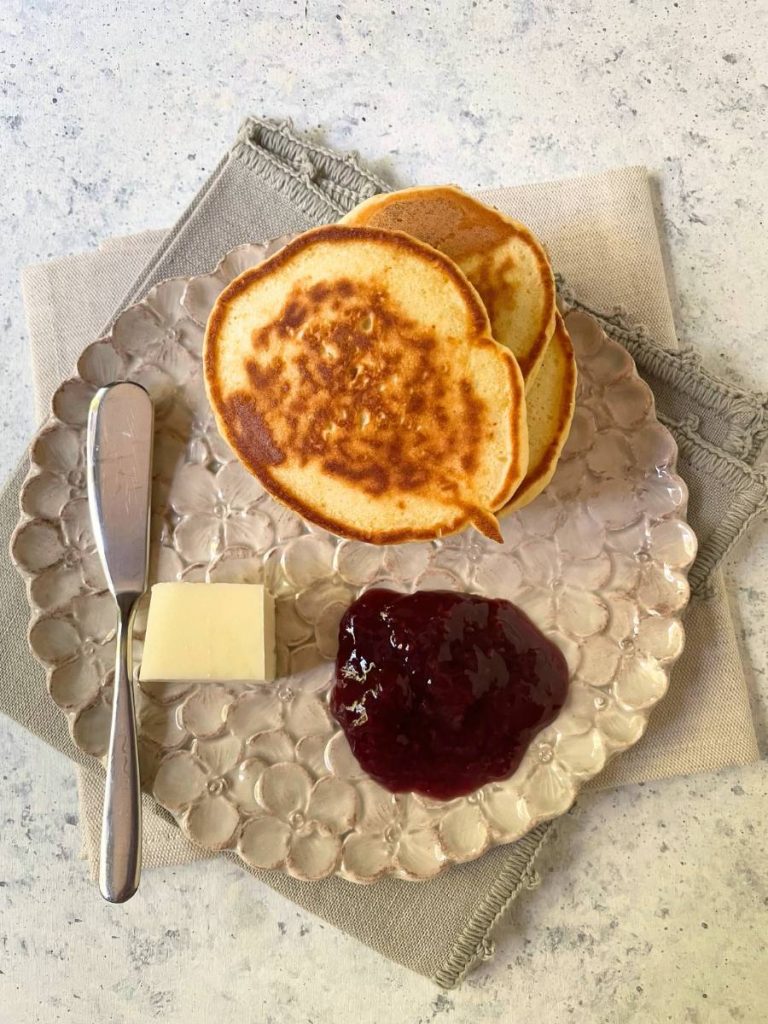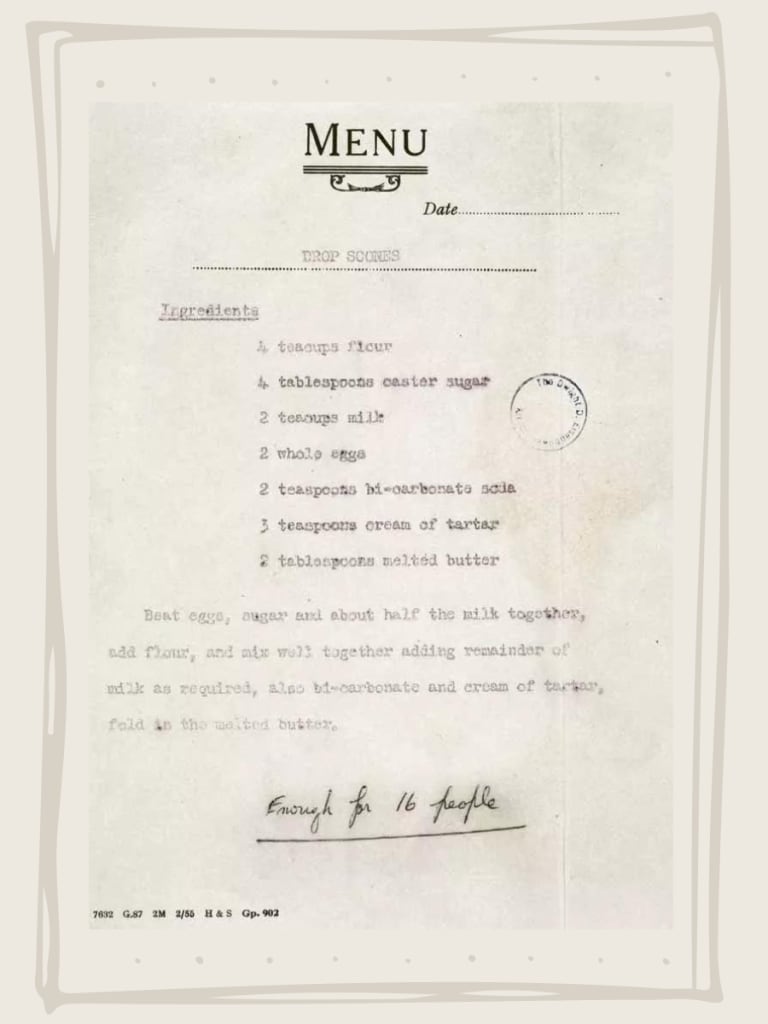The Queen Elizabeth’s drop scones intrigued me at first glance. You know I love pancakes, and over time, I’ve made many, and when I come across a new recipe, I can’t resist trying it.
This one, in particular, carries a very unique story. In fact, according to the English royal archives, these scones were prepared by Queen Elizabeth for President Dwight Eisenhower during his visit to Balmoral Castle in 1959. She later sent a letter to the President, attaching the recipe with notes and the suggestion to use molasses instead of granulated sugar. (You can find a copy of the recipe, taken from the English state archives, at the end of the article)
Also called “scotch pancakes”, they actually resemble pancakes more than the classic English scones we are used to. This made me even more curious to prepare them.
The perfect pairing for Queen Elizabeth’s drop scones is with raspberry jam and a little fresh whipped cream. Ideally, it would be clotted cream, but in Italy, it’s practically impossible to find, and the process to make it at home is not the simplest. Also great is good Canadian maple syrup or the unbeatable hazelnut spread cream.
For a true English breakfast or tea time, here are some recipes

- Difficulty: Very Easy
- Cost: Very Cheap
- Preparation time: 10 Minutes
- Portions: 25 scones
- Cooking methods: Stove
- Cuisine: British
- Seasonality: All Seasons
- Energy 97.44 (Kcal)
- Carbohydrates 17.72 (g) of which sugars 6.76 (g)
- Proteins 2.96 (g)
- Fat 2.05 (g) of which saturated 1.15 (g)of which unsaturated 0.87 (g)
- Fibers 0.46 (g)
- Sodium 23.63 (mg)
Indicative values for a portion of 45 g processed in an automated way starting from the nutritional information available on the CREA* and FoodData Central** databases. It is not food and / or nutritional advice.
* CREATES Food and Nutrition Research Center: https://www.crea.gov.it/alimenti-e-nutrizione https://www.alimentinutrizione.it ** U.S. Department of Agriculture, Agricultural Research Service. FoodData Central, 2019. https://fdc.nal.usda.gov
Ingredients for drop scones
- 3 1/4 cups all-purpose flour
- 1 packet baking powder
- 2 eggs (large)
- 1/2 cup sugar
- 1 1/2 cups whole milk
- 1/4 teaspoon salt
- 1 1/2 tablespoons butter (melted)
- to taste raspberry jam
- to taste maple syrup
- to taste whipped cream
Tools
- Crepe Pan
Preparation of drop scones
Pour the flour, baking powder, and a pinch of salt into a bowl and mix well.
In another bowl, whisk the eggs and sugar, then add the whole milk, reserving a little. Mix carefully.
Pour the flour mixture into the egg and milk mixture and mix carefully. If the batter is too thick, add the reserved milk. The batter for the drop scones should be liquid enough to be spooned into the pan but thick enough not to spread too much. It’s not a crepe that needs to be spread well on the griddle.
Finally, incorporate the melted butter. Stir one last time.
Heat the pancake pan well, grease it with a little butter, spreading it well with a paper towel, and spoon in the batter.
Wait a few minutes, and as soon as bubbles start to form, flip the pancake with the help of a spatula and continue cooking for a couple of minutes.
Place the drop scones on the serving plate, stacking them so they stay warmer.
Serve the drop scones with your preferred jam; I love raspberry jam for this type of recipe, fresh whipped cream, and maple syrup.

Mainly produced in Cornwall and Devon, clotted cream has been a PDO product since 1998, equivalent to the English DOP. One of the companies that holds the monopoly in terms of production is, to this day, Rodda’s, based in Cornwall, which supports small milk producers by using cream from territories confined within limited borders and from herds of cows that spend at least 10 months grazing outdoors.
The recipe for these very special pancakes, revised and adapted, is taken from Simply Recipe.


